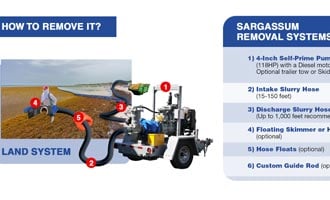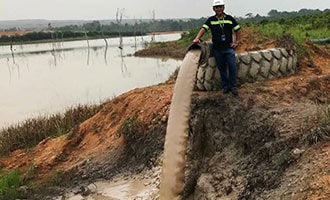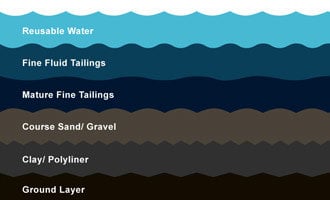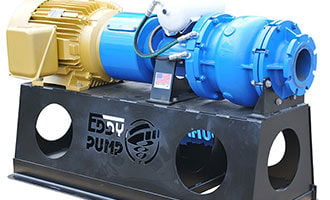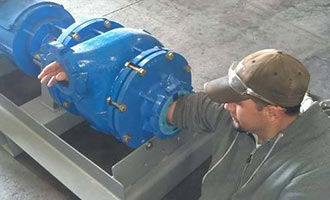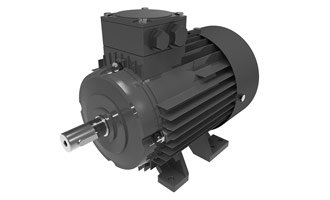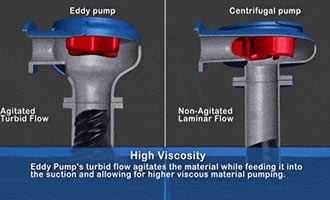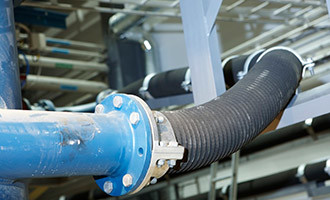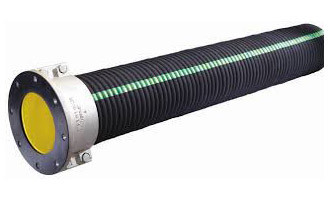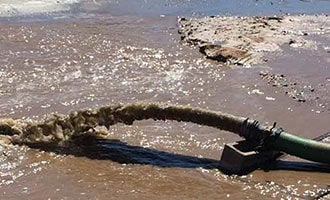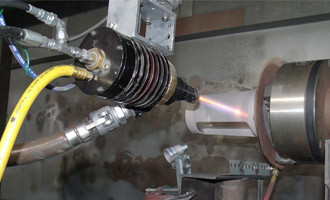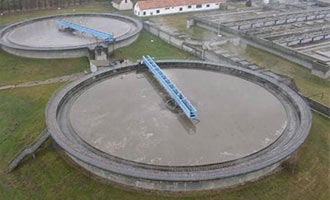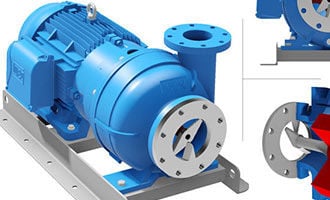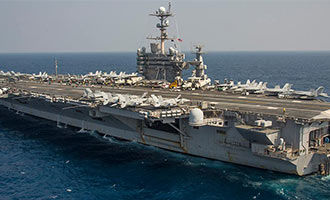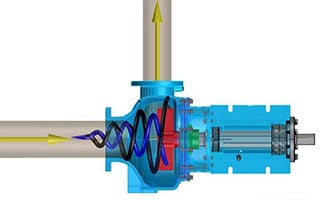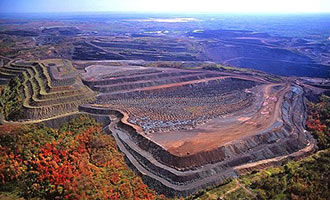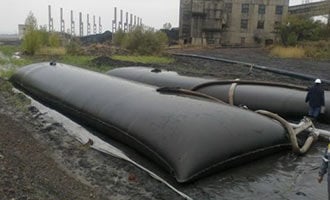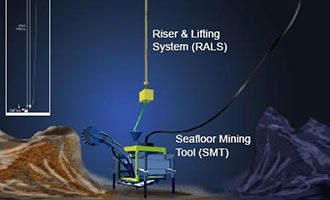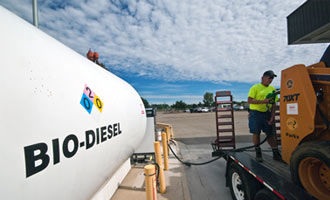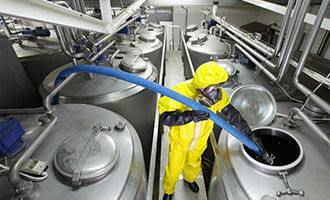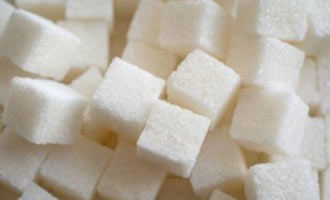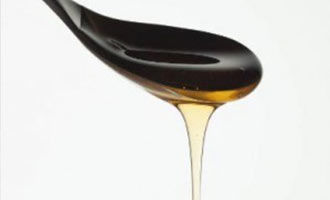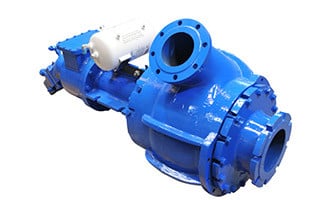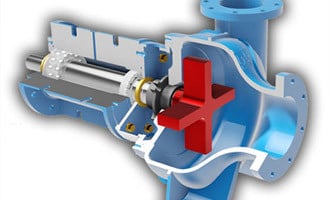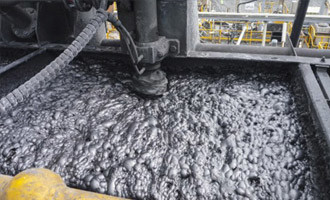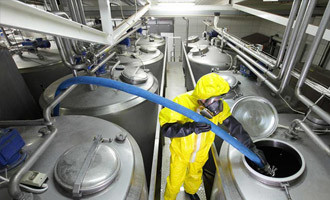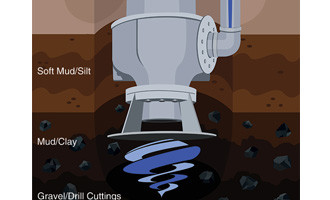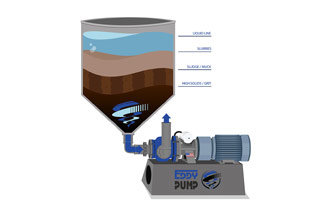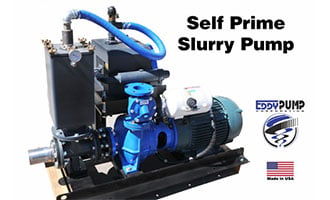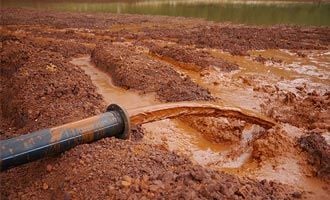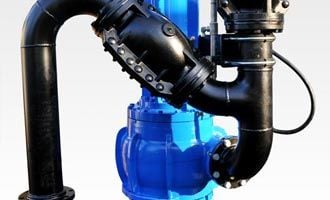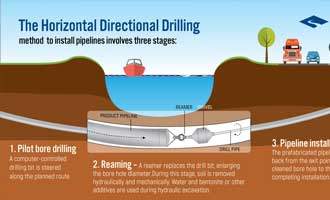Slurry Pipeline Changes: What Effect Can It Have On Your Operation?
Learn what happens when changes are made to a slurry pipeline in the middle of an operation. Find out how these changes affect the pump and overall performance of the operation. Browse Our Slurry PumpsContact Us For Fast QuoteThis article includes:
- Slurry Pipeline Description
- Guidelines for an Effective Slurry Pipeline
- What Happens When a Pipeline Diameter is Changed
- When Considering Pipeline Diameter Changes
- Effect of Changing Pipe Length
- Quick Tips When Changing a Slurry Pipeline
- A Case Study
Slurry Pipeline Description:
Pipe abrasion and the associated erosion loss is a major concern in any slurry pipeline system. Efforts are constantly being made to improve pipeline structure and materials for a variety of industries. Slurry pipelines can be made of many different materials such as carbon steel, alloy steel, hardened steel, stainless steel, abrasion resistant lined pipes, and non-ferrous pipes, HDPE etc. The material of the pipeline is generally selected based on the application, material being pumped, and cost.
The use of non-ferrous slurry pipelines is increasing day to day around the world.
For example:
High-density polyethylene (HDPE) is extensively used for applications such as mine tailings due to its ultrahigh molecular weight and resistance to abrasiveness. It has a much better life expectancy than unlined carbon steel pipes, especially when dealing with abrasive or corrosive slurries. Polyurethane is generally used for in-plant slurry piping. It is flexible and resistant to heat and corrosion. Polybutylene pipe is a flexible thermoplastic pipe and has higher tensile strength and very good heat resistance. Besides the above, other low wear resistance non-ferrous pipes for slurry are PVC (Polyvinyl chloride), PP (Polypropylene), ABS (Acrylonitrile-butadiene-styrene), and fiberglass pipe with internal ceramic chips.
Internally Lined Steel Pipelines, non-ferrous materials are generally used as a liner inside the steel pipe to safeguard against erosion and corrosion.
Situ Lining of Steel Pipelines, a plastic pipe of slightly smaller diameter inserted into the steel pipe, and then the annular space filled with cement. Another way is to take a slightly larger diameter high-density polyethylene pipe and compress it to reduce the outer diameter. This compressed pipe is then carefully pulled inside the steel pipe; when releasing the constricting force, the inner pipe firmly presses against the inside of the steel pipe.
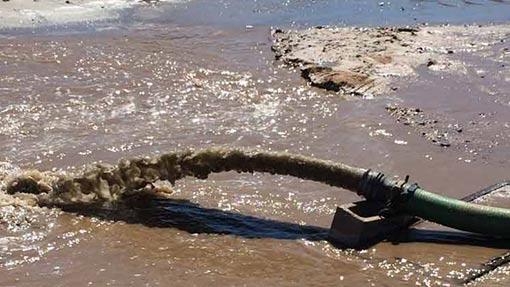
Guidelines for an Effective Slurry Pipeline
- The slopes of the horizontal line should not exceed the angle of repose of slurry.
- Maintenance routines for flushing and draining of pipelines along with manual cleaning must be kept.
- Prone wear points must be identified.
- Use long radius bends.
- Use a valve with maximum port size.
- Use full port ball valves.
- Avoid use of globe valve (seat may be plugged by solid deposition).
- Provide flushing connection of valves.
- Steel pipes lined with abrasion resistant lining can significantly increase the life of pipes.
- To extend the service life of a pipe the lining methods can be used in an operating pipeline.
- The bottom of slurry pipes can wear quickly due to greater continued exposure to the slurry being pumped. To reduce the potential for concentrated wear, rotate pipes periodically if possible.
What Happens When a Pipeline Diameter is Changed?
When referring to the diameter of a pipeline it means the internal diameter or I.D. Piping is measured in two ways; diameter meaning inside diameter, and schedule meaning pipe wall thickness. If you purchase an 8-inch diameter pipe it means that the inside diameter is 8-inches.
To pump a specific amount of fluid through a pipeline requires the pump to exert a specific amount of force onto the fluid, which forces the fluid through the pipeline. As the fluid is forced through the pipeline and downstream of the pump to achieve the desired output, a specific rate of flow must be maintained. This specific rate of flow is referred to as fluid velocity.
Hypothetically speaking, let’s assume that a slurry pump and the pipeline have been configured to achieve a specific flow rate of a certain viscosity fluid. Let’s also assume that a portion of the piping, due to the harsh environment that piping must endure, has become damaged and must be replaced. When replacing damaged piping, if the same flow rate is required, always replace the piping with the same diameter piping; avoid using a smaller diameter. If a smaller diameter piping is installed, it will result in a restriction causing an increase in pipe friction, which in turn reduces the velocity of the fluid being pumped – flow rate with also become reduced. In this type of situation, a reduction in flow rate can be overcome by increasing the force the pump exerts on the fluid being pumped, but this will decrease pump efficiency and increase the cost of the pumping operation. This can also increase the wear to the piping due to the increase of pressure and friction inside of the pipeline.
When replacing existing piping, it is just as important to avoid installing piping that is larger in diameter than the piping that is being replaced. Installing larger diameter piping can also have adverse effects on the desired flow rate. If larger diameter piping is installed, a reduction in flow rate results from a decrease in velocity and pressure within the pipeline. This situation will also require an increase in the force exerted on the fluid to achieve the desired flow rate, which increases the cost of the pumping operation. In this scenario, reduced velocity and pressure can also increase the potential for pipeline clogging due to the slurry settling on the bottom portion of the pipeline.
Based on what slurry you are pumping and the desired flow rate, it is important to make sure that your pipeline and hose are sized correctly for your pump.
When Considering Pipeline Diameter Changes
When a specific flow rate is desired and a change in pipeline diameter cannot be avoided to a pump already in service, the pump speed must be recalculated based on several factors. Some of these factors include viscosity of material being pumped, how far the pump is positioned away from the fluid source, the distance from the pump to where the fluid will be discharged, and the new pipeline diameter. These are the same considerations when originally selecting the pipeline diameter for achieving the desired flow rate and fluid output.
A well designed pumping system will optimize the effectiveness of the pumping operation, save thousands of dollars avoiding downtime of the pump, and help to ensure that continuous pumping output is achieved.
Effect of Changing Pipe Length
The length of the pipeline is another critical consideration for achieving a desired flow rate and fluid output. The same result as in replacing piping with a pipe diameter that is larger than what was determined to be the most suited for the flow rate desired applies to increasing the length of pipeline at the discharge of the pump. If an increased length of piping is installed, a reduction in flow rate results from a decrease in velocity and pressure within the pipeline. This situation will also require an increase in force exerted on the fluid to achieve the desired flow rate, which increases the cost of the pumping operation. In this scenario, reduced velocity and pressure can also increase the potential for pipeline clogging due to the slurry settling on the bottom portion of the pipeline.
The specific decrease in velocity and pressure will depend on the length of piping that is added. When the force that is exerted on the fluid is increased to compensate for the reduction due to the increase in the piping length, the pipe friction losses will also increase. This is because as the pipeline increases the surface area also increases, which in turn increases the losses due to friction. This is another critical factor that must be considered when increasing the length of the discharge pipeline. This can result in a greater amount of energy required to operate the pump which can lead to increased pump operation costs.
The opposite effect occurs when decreasing the length of the discharge pipeline. The fluid velocity and pressure can increase, which can also increase pipe friction loss. In this scenario, the operation of the pump must be reduced, which includes reducing the force exerting on the fluid to bring the operation back to the operating parameters that are consistent with the application requirements.
Quick Tips When Changing a Slurry Pipeline
- Recalculating pump operating parameters is required whenever changes to pipeline diameter and length are changed.
- The shortest distance from the origin of material to the material destination is most effective.
- Increases in pipeline diameter and/or distance reduces fluid velocity and pressure.
- Decreases in pipeline diameter and/or distance increase fluid velocity and pressure.
- Increases in fluid velocity and pressure result in increased pipe friction loss.
- Increases in fluid velocity and pressure will increase the wear due to abrasion when pumping abrasive slurry.
- Increases in pipeline diameter and length can increase the energy required to compensate for the loss in fluid velocity and pressure, resulting in an increase in the cost of operation.
- When selecting pipe size, the pipe size refers to the inner diameter (I.D.).
- When selecting hose size, the hose size refers to the outer diameter (O.D.).
Effect of Changing an Existing Pipeline
Sometimes, a pipeline may need to change during an operation. If this happens, the following changes may occur:
- Change in pipe diameter
- Change in pipe length
- Change in pipe elevation
- Change in pipe fittings, valves etc.
- Change in pipe materials
Earlier, the two effects we previously explained i.e. diameter change and the length change will also applicable here. Also, some other ways in which a pipeline can be altered will be explored like the effect of elevation change, changes in fittings & valves, and changes in pipeline material.
If the pipe elevation increases, an additional head or pressure will be required to compensating that.
When a liquid flow changes its direction, there is resistance. Moreover, the liquid will try to flow around the outer edge of the fitting. This reduces the effective area of the fitting. Hence, the velocity of the liquid will increase and the frictional loss or pressure drop will also increase. Therefore, any change in the pipe fittings will affect the pressure drop or frictional loss of the system.
A similar effect will also occur in valves, due to their non-linear and non-uniform passage. As a result, a pressure drop or frictional loss will also occur in case of any change in the valves. Additionally, valves are prone to water hammer which are high-pressure shock waves that are produced when a liquid is suddenly forced to stop in a pipe, either due to valves, or the pump ceasing operation.
Changes made to the pipe materials will change the pipe friction factor. This will also affect the result of pressure drop or frictional loss calculations.
Quick Tips on Hose & Pipeline Measurement
How a Slurry Hose diameter is measured:
Slurry hoses and slurry hose assemblies are measured by their inside diameter measurement. In highly abrasive pumping applications and material, the slurry hose may have an inside liner that could alter the inner diameter of the hose, which needs to be calculated correctly in order to make the hose a perfect fit into your pipeline.
How a Pipeline Diameter is measured:
Pipelines less than 12 inches are measured by their internal diameter. Furthermore, these pipelines could also contain an inner liner to help protect against abrasive or corrosive materials which must be taken into account when fitting to a slurry hose.
Additionally, a pipeline that exceeds a 12-in. inside diameter is instead measured by its outside diameter. So, for pipelines that exceed a 12-inch diameter, This must be taken into account when trying to fit with an existing slurry hose or pipeline. For calculating the inside diameter of pipes exceeding 12-inches, the operator must know the pipe’s outside diameter, schedule (thickness) and whether the system is lined. Knowing these factors will allow the operator to carefully select the exact measurement of the inside diameter of the pipe to perfectly match the existing system.
A Case Study:
Suppose, we have an old slurry pipeline system; we need to change the following:
- Pipe diameter due to the requirement of higher flow
- Pipe length due to the relocation of equipment
- Pipe materials due to wear of existing pipe
Now, before we detail what these changes would do to an existing pump and pipeline system, we will review mathematically how fluids interact with different pipe configurations.
1) The fundamental relationship between fluid flow and the pipe diameter is:
Flow = Internal Diameter of Pipe x Velocity of Fluid
2) The fundamental relationship between the pipe friction loss or pressure drop and the pipe diameter and the pipe length is:
Pipe Friction Factor x Length of Pipe x Fluid Velocity 2
Pressure Drop = ————————————————————————————-
Internal Diameter of Pipe x Gravitational Force
3) The fundamental relationship of energy required with regards to the fluid flow rate and pressure is:
Flow Rate x Pressure
Pump Power HP = ————————————
Conversion Factor x Efficiency
Now, if we want to get a higher flow while keeping the same velocity:
- According to the 1st relationship we need to increase the internal diameter of the pipe.
- If the pipe diameter is increased, the pressure drop or pipe friction loss will be less, resulting in increased flow.
- However, if the flow is increased, the power to the pump will need to be increased to match the previous velocity of the smaller diameter pipeline.
Now, if we need to increase the pipe length while keeping other parameters the same:
- According to the 2nd relationship, the pressure drop or pipe friction loss will increase.
- If the pressure drop increases, the pump power will need to increase to account for the increased friction loss.
Now, if we need to change the pipe materials while keeping other parameters the same:
- The pipe friction factor will change, depending on the material. Additionally, the pressure drop or pipe friction loss will also change, if the other parameters remain unchanged.
- If the pressure drop changes, so will the amount of power needed to effectively move the material through the pipeline.
So, in our above case, changing a pipeline mid-operation can be a costly decision, affecting:
• Project cost:
Design engineering, Materials, fabrication/manufacturing, construction/installation, and the commissioning.
• Operation cost:
Energy costs – electricity, fuel etc., Manpower costs – operator, labor etc., and the increased cost of Utilities – water, gases, oil, grease etc.
• Maintenance cost:
Manpower – labor etc., Materials – spare parts, grease, oil etc., and the associated utilities.
Best Applications – Industries Most Served
The EDDY Pump Corporation is a premier manufacturer of pumping and dredging equipment. If you are pumping or dredging slurry, high solids, extremely viscous material, paste, high abrasives (sand & gravel), and material filled with solids, then you found the best-suited product for the job. Go to: https://eddypump.com/ or Call Us!
Mining, Fly Ash, Coal Ash, Oil, Fracking, Gas, Wastewater, Pulp and Paper, Chemical, Energy, Water Municipalities, Irrigation, and Dredging Companies. For Access to Complete Product Line Go to: https://eddypump.com/products/
Order or Get Selection Help
Let our sales or engineering support help in your slurry pump and dredge equipment selection. Call (619) 258-7020
Why EDDY Pumps Are Better – Highlights
This video shows how EDDY Pump transports high slurry and abrasive materials. Featured dredge pump equipment includes the Remote Operated Subdredge, Diver Operated Pump and a Excavator Attachment Dredge Pump.
Why EDDY Pumps Are Better - Highlights
This video shows how EDDY Pump transports high slurry and abrasive materials. Featured dredge pump equipment includes the Remote Operated Subdredge, Diver Operated Pump and a Excavator Attachment Dredge Pump.





